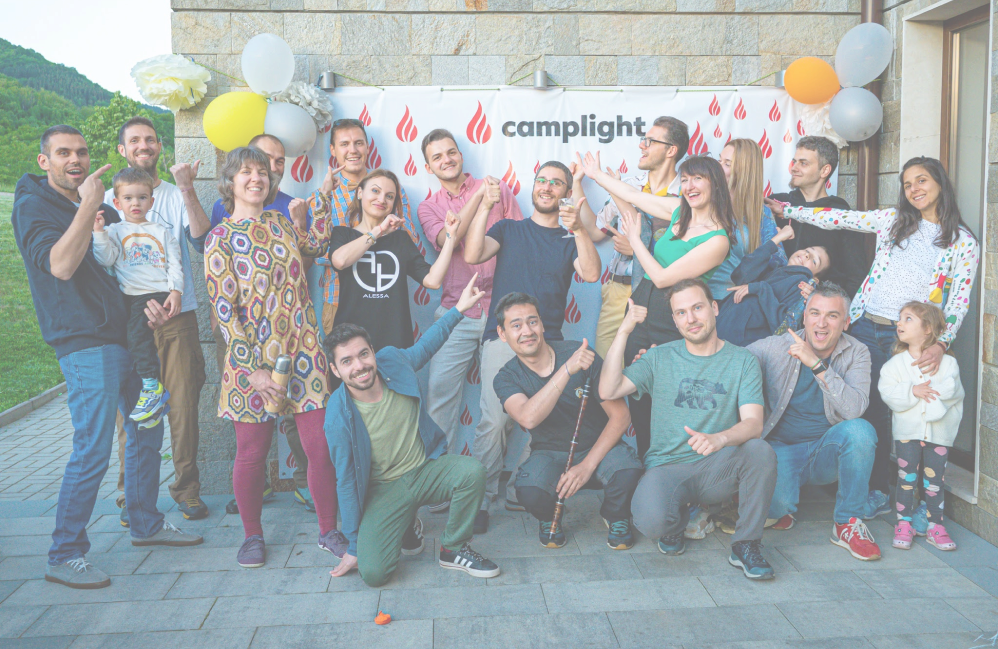Building a digital product is a journey in every sense of the word. Do you have any idea where it stems from?
The term “journey” originates from the Old French jornee, meaning “a defined course of travel“, or “one’s path in life”—a reminder that progress is made step by step, not all at once.
Just as travelers face unknowns, developing a digital product requires navigating uncertainties, learning from each challenge, and constantly refining the path forward. It is a process of movement, progress, and experience rather than a single, fixed destination.
At Camplight, we believe that creating a digital product mirrors this concept of a journey. It’s not simply about gathering requirements, passing them to developers, and checking tasks off a list. Rather, it’s about evolving through continuous discovery, prototyping, testing, and iterating.
In this post, we’ll explore why the road to building a successful product is rarely linear and how embracing the ideas of fast prototyping, failing fast, and learning along the way leads to innovation and growth.

The Dynamic Nature of Digital Product Development
Creating a digital product is like trying to hit a moving target. Technology is always evolving, user behaviors shift, and market demands fluctuate. So, what does success depend on?

That’s right, adaptability.
Instead of aiming for a fixed endpoint, teams have to continuously adjust and refine their product to stay relevant.
Think about companies like Instagram, which started as a photo-sharing app but has since evolved into a multimedia platform with video content, stories, and shopping features to keep pace with user trends.
The reality is that product development is more of an adventure than a straight path. There are smooth stretches when everything clicks and moments when roadblocks appear unexpectedly.
Another well-known example is Spotify. When it launched, its core feature was streaming music. Over time, user behaviors and the competitive landscape changed, leading to podcast integration, social sharing, and more. Each iteration, user feedback, and technological advance represents a new step forward. Spotify didn’t stick to its original plan—they adapted. And that’s why they’re still relevant. At its core, digital product development is a cycle of building, testing, and refining.
Overcoming the Roadblocks: Common Challenges in Building a Digital Product
Yes, the forementioned examples are inspiring, but we have to mention it’s not all rainbows and butterflies. It’s essential to recognize the most common challenges teams face when building a new digital product. Here are a few typical roadblocks that can stall, sometimes even derail your progress:
- Misaligned Vision: Teams may have different understandings of the product’s goal. It’s vital to ensure that the whole team is working toward a shared vision.
- User Feedback Overload: Balancing user feedback without losing focus can be tricky. Not every suggestion should lead to a change, but understanding patterns in feedback is key.
- Technical Debt: Rushing features into production without proper planning can lead to a backlog of fixes, bugs, or necessary improvements later.
- Striving to achieve perfection: Don’t forget that it’s not about perfection, it’s about progress. So keep going!
Embracing the Ups and Downs: Learning from Failures
Every journey has its bumps in the road. Setbacks are inevitable. However, it is extremely important how you’re about to perceive them. Are they just obstacles or maybe something more…like valuable learning opportunities? The key is to adopt a “fail fast, learn fast” mindset. Check our latest post on the subject.
Agile development thrives on fast feedback loops, allowing teams to test, tweak, and pivot before committing excessive resources. Rather than investing months into building a feature only to discover it’s not what users want, quick testing ensures you can make changes on the fly.
At Camplight, we’ve seen how quickly testing and refining ideas can drive innovation, and we are not willing to waste any extra time.
The Power of Fast Prototyping
If you’re following our blog, you might wonder whether we will get tired of talking about fast prototyping. Well, we won’t. Fast prototyping is one of the most effective tools in the digital product development toolkit.
Camplight’s approach emphasizes rapid experimentation and creating early deliverables that help shape the final product. It allows you to bring ideas to life quickly and gather valuable feedback, getting to know if you should commit to a full-scale build or not.
In some cases, we can go from zero to prototype in a matter of hours, not even days. Read more about it here. And just imagine how much time and resources it saves.
To put it shortly, what’s the result? Reduced risk, clearer insights, and a product that evolves based on what users actually need—not just what was originally imagined.
Key Stages in the Journey of Building a Digital Product
Like any journey, building a digital product has distinct stages. Each stage has its own challenges, but they all feed into one another, creating a continuous cycle of growth and improvement:
- Venture architecture: Every great product starts with a problem and a potential solution. This stage is all about gathering insights and understanding the landscape.
- Pre/Prototyping: Once the initial concept is clear, the development phase begins. Here, features are built, tested, and refined continuously. Iteration ensures the product remains functional and relevant as it evolves. We often use design sprints to optimize the process.
- MVP: Build small, test, and refine. This stage emphasizes the importance of feedback loops. Whether it’s through beta testing or focus groups, constant feedback helps fine-tune the product.
- Business growth: When your product has found a solid market fit, it’s time to scale. This is where continuous improvements and optimizations take center stage, ensuring that as your user base grows, your product evolves to meet new demands.
Navigating Uncertainty with the Right Mindset and Tools
Embracing uncertainty with the right mindset and tools allows teams to tackle all the unknowns with confidence and without fear.
Flexibility has turned into something essential, it’s not just a nice-to-have anymore. By being flexible, you can build custom software products that wow the users. When we say “be flexible” we don’t mean it only in the sense of always being ready to respond to shifting demands and changes within the process of building a digital product, we are also referring to having a flexible mindset.
Furthermore, It is of great importance to take the emotional world of your teammates into consideration. This is why we created Moodlight – because we want to understand the emotional climate before we delve into the daily tasks. Achieving mindfulness is what brings people together and sets the ground for productive collaboration.
Frameworks like Design Thinking and sprints help teams quickly ideate, prototype, and test ideas, allowing for rapid iteration without fear of failure. Moreover, partnerships with experienced venture builders can offer vital guidance and operational support, especially for organizations trying to innovate in unfamiliar terrain.
Final Thoughts: Enjoy the Journey
In the end, building a digital product is about embracing the journey rather than focusing on a fixed destination. There will be twists, turns, and challenges, but each step—whether a success or failure—offers a valuable lesson.
By adopting an agile mindset, prioritizing fast prototyping, and learning along the way, you create better products and foster a culture of continuous improvement and innovation. So, enjoy the process. After all, every great product is shaped by the journey it takes to get there.
Do you need a partner on the way? Don’t hesitate to contact us. We are eager to hear from you and help bring your vision to life.

